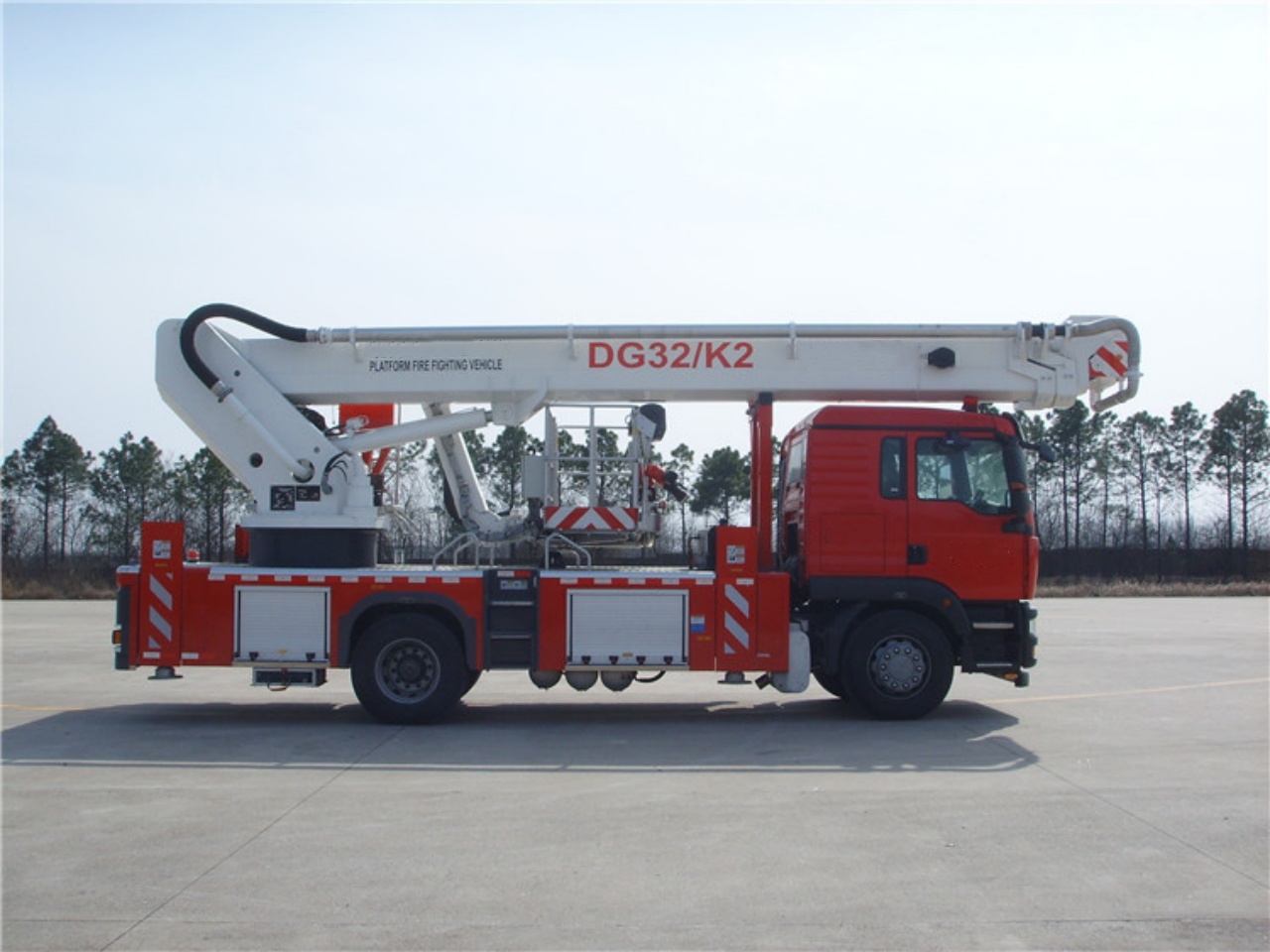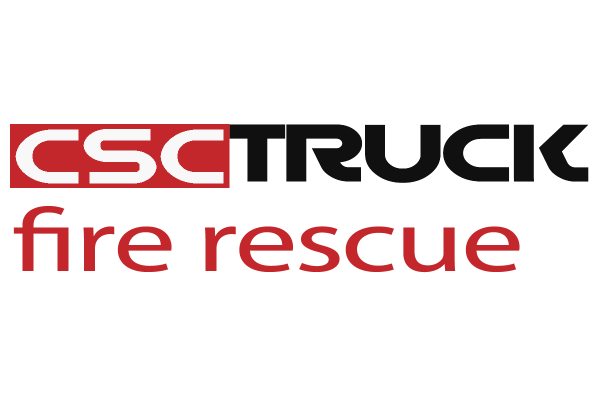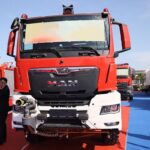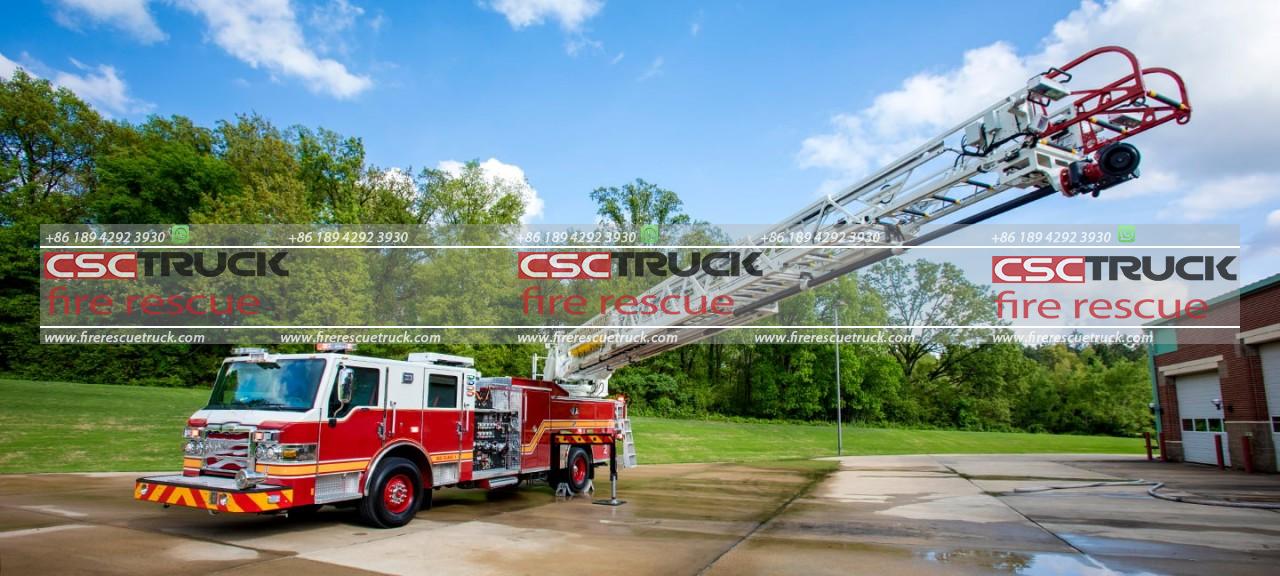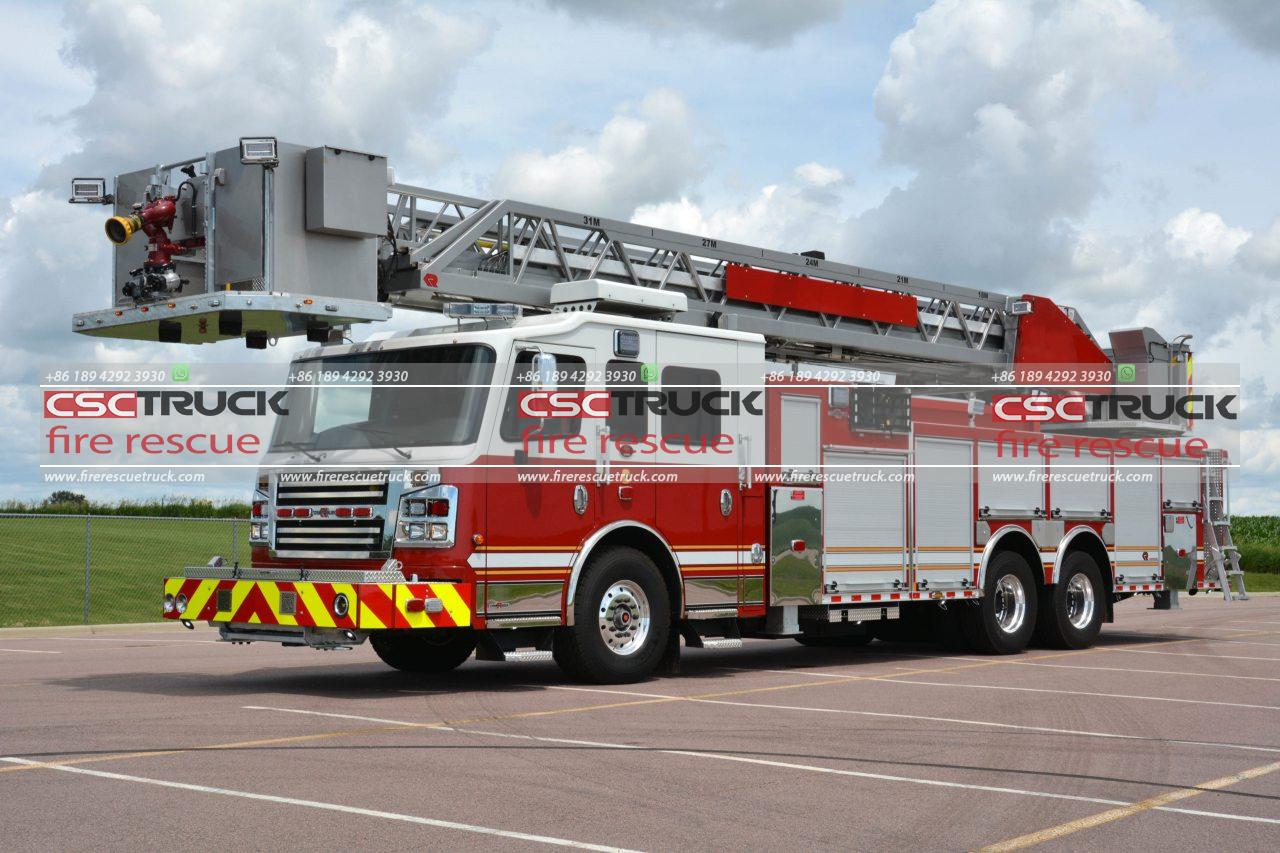Firefighting requires specialized vehicles to tackle various emergencies efficiently. One of the most vital tools in a fire department’s arsenal is the aerial fire apparatus. These sophisticated firefighting vehicles are designed to provide elevated access to fires, rescue operations, and other emergencies. Aerial fire apparatus plays a crucial role in combating fires in high-rise buildings, industrial complexes, and other locations where traditional fire engines may not be sufficient.
Definition and Purpose of an Aerial Fire Apparatus
An aerial fire apparatus is a specialized fire truck equipped with an extendable ladder or boom to provide access to high places. These vehicles are primarily used for fire suppression, rescue operations, and ventilation efforts in multi-story buildings, industrial settings, and other elevated fire zones. They enable firefighters to safely reach heights that would otherwise be inaccessible using conventional ground-based firefighting methods.
Aerial fire apparatus is often classified into different types based on the design of their aerial devices, including aerial ladders, telescopic platforms, articulating booms, and combination units. These vehicles enhance firefighting efficiency by providing better reach, mobility, and functionality in complex fire scenarios.
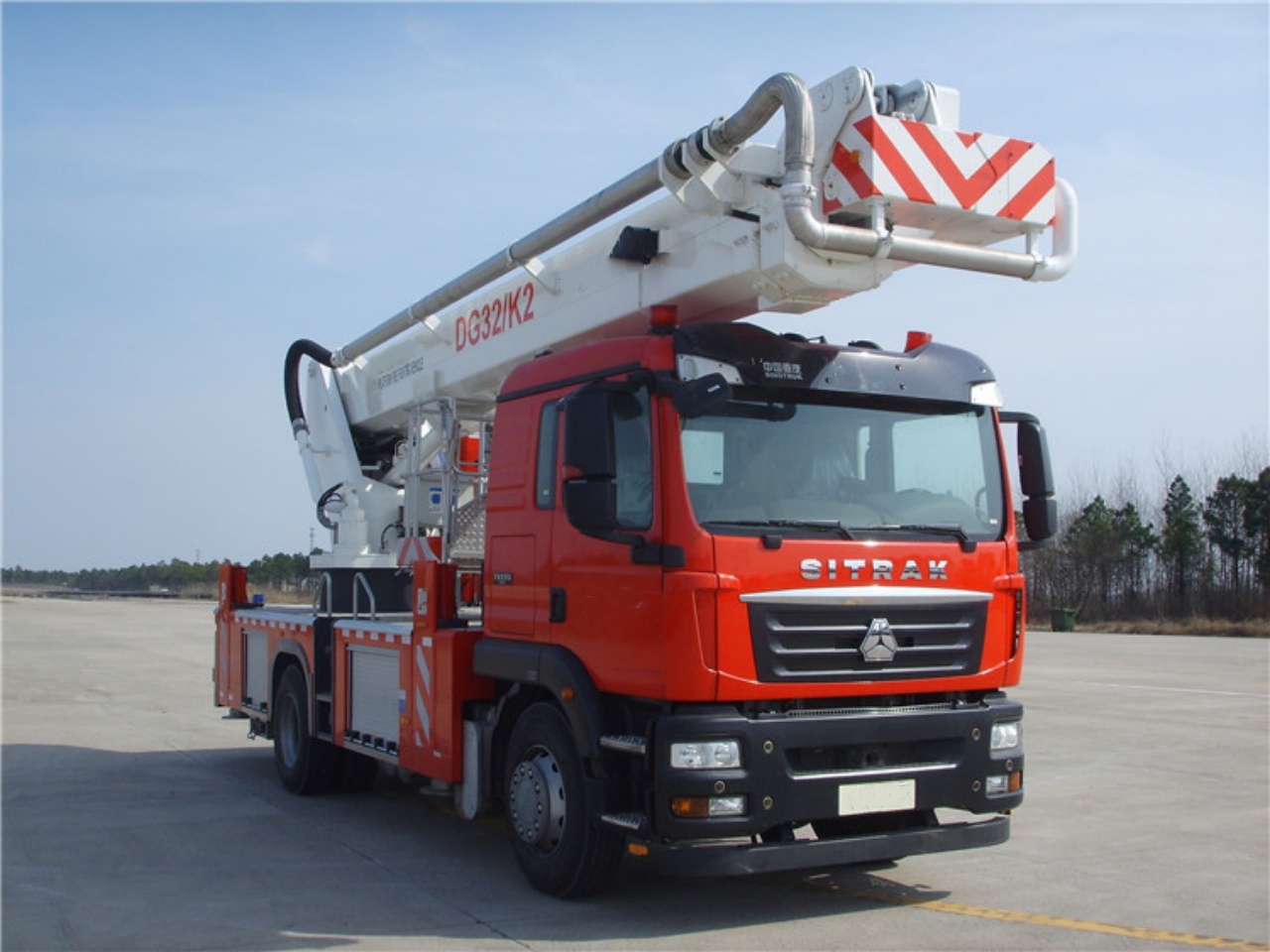
Types of Aerial Fire Apparatus
There are several types of aerial fire apparatus, each designed for specific firefighting needs:
1. Aerial Ladder Trucks
Aerial ladder trucks, also known as ladder trucks or straight-stick ladders, are equipped with a long, extendable ladder mounted on a rotating turntable. These ladders can extend to significant heights, often reaching over 100 feet. Aerial ladder trucks are used for:
- High-rise firefighting
- Elevated rescues
- Ventilation operations (breaking windows and roofs)
- Water application from above
These ladders may or may not have a built-in waterway, allowing firefighters to direct water streams from the tip of the ladder.
2. Tower Ladders
Tower ladders feature an extendable ladder with a platform or bucket at the end. The bucket allows firefighters to stand while directing a water stream or rescuing people. Tower ladders offer increased stability and operational versatility, making them ideal for:
- High-rise firefighting with a secure work platform
- Rescuing multiple victims at once
- Aerial water application
- Ventilation work
3. Articulating Boom Platforms
Articulating boom platforms, also called snorkel trucks or knuckle booms, use a jointed arm to extend and maneuver around obstacles. These are beneficial in urban environments with overhead obstructions such as power lines, trees, and signage. Fire departments use articulating booms for:
- Reaching difficult angles in congested areas
- Elevated rescues in tight spaces
- Precision water delivery
4. Tiller Trucks (Tractor-Drawn Aerials – TDA)
Tiller trucks, or tractor-drawn aerials (TDAs), feature a separate cab and trailer configuration, allowing enhanced maneuverability in urban environments. The trailer is steered independently from the front cab, making it easier to navigate tight streets. Fire departments favor tiller trucks for:
- Urban firefighting with narrow streets
- Rapid aerial deployment
- Large ladder lengths exceeding 100 feet
5. Quint Fire Apparatus
A quint (short for quintuple combination pumper) is a hybrid firefighting vehicle that combines the capabilities of an engine and an aerial apparatus. It features:
- A fire pump
- A water tank
- A hose bed
- Aerial ladder or platform
- Ground ladders
Quints are beneficial in areas where fire departments require a multi-purpose vehicle that serves both engine and aerial functions.
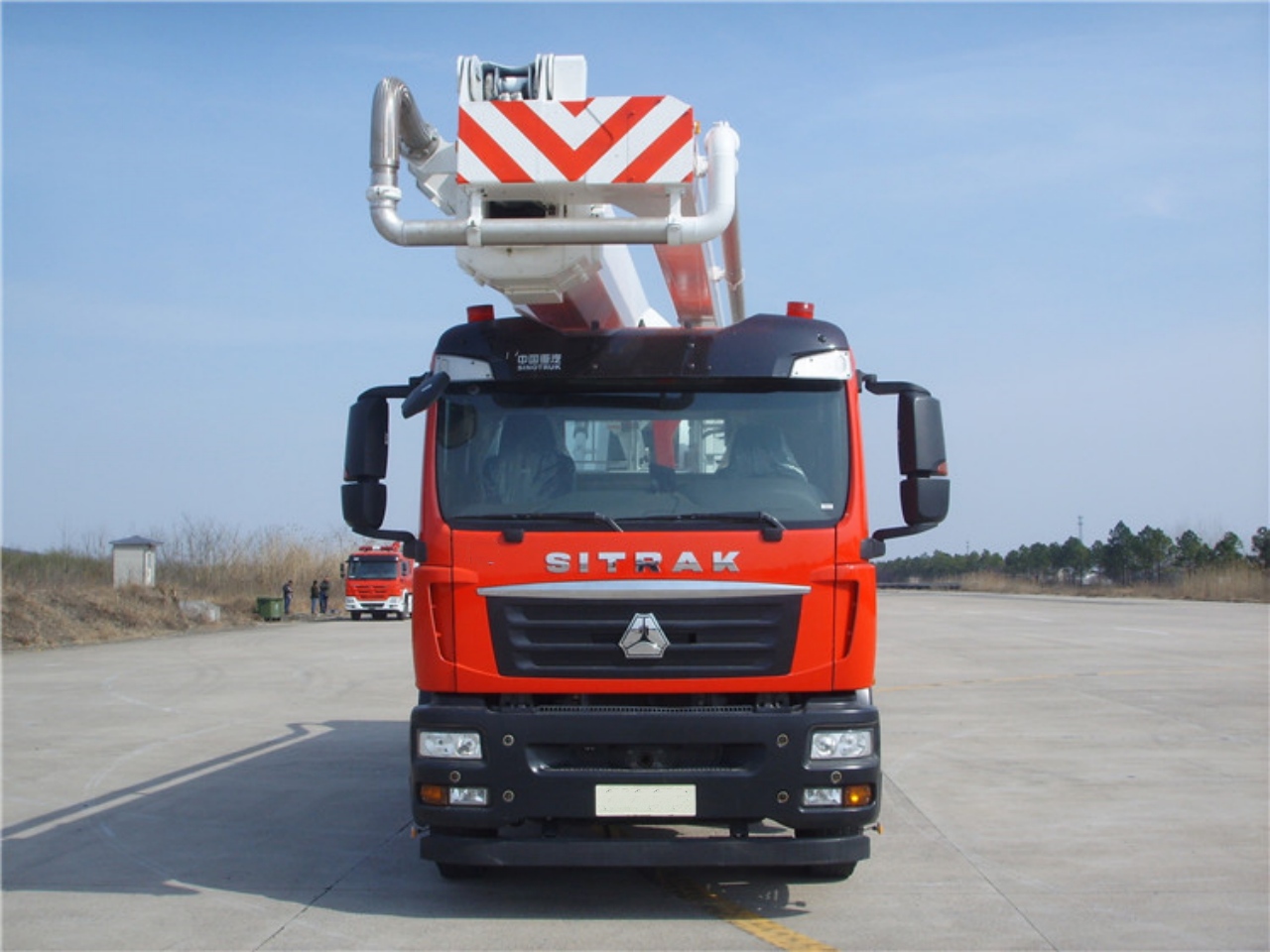
Key Features and Components of Aerial Fire Apparatus
Aerial fire trucks are built with a range of essential features that enhance their effectiveness in firefighting operations. Some of the most critical components include:
1. Aerial Device (Ladder or Boom)
The primary component of an aerial fire apparatus is its extendable ladder or boom, allowing firefighters to reach elevated locations. These structures are designed using high-strength steel or aluminum to ensure durability and stability.
2. Turntable and Rotation Mechanism
Most aerial fire trucks are equipped with a turntable, enabling the ladder or boom to rotate 360 degrees. This feature provides firefighters with flexibility when positioning the aerial device for firefighting and rescue operations.
3. Stabilization System (Outriggers and Jacks)
To ensure the safety of firefighters working at height, aerial apparatus comes with outriggers and stabilizers. These components extend from the vehicle to provide a stable base, preventing tipping and ensuring operational safety.
4. Water Delivery System (Waterways and Nozzles)
Many aerial fire apparatus include built-in waterways and monitors (nozzles) at the tip of the ladder or platform. These features allow for the delivery of high-volume water streams without requiring firefighters to manually handle hoses at extreme heights.
5. Control Systems (Manual and Electronic Controls)
Modern aerial fire trucks are equipped with electronic and hydraulic control systems for precise movement of the ladder or boom. Operators can control the aerial device from multiple locations, including the base and the tip of the ladder.
Uses and Advantages of Aerial Fire Apparatus
Aerial fire apparatus serves several critical roles in firefighting and rescue operations:
- Elevated Fire Suppression: Aerial devices allow for water application at height, useful for combating fires in high-rise buildings and industrial structures.
- Rescue Operations: Firefighters use aerial platforms and ladders to evacuate trapped individuals from upper floors, balconies, and rooftops.
- Ventilation: Firefighters can break windows or cut openings in roofs from an elevated position to release smoke and heat, improving interior conditions for firefighting teams.
- Rapid Access in Large-Scale Fires: When multiple floors or areas need to be reached quickly, aerial apparatus provides efficient access for firefighters and equipment.
- Flexibility in Different Environments: Whether in urban settings, industrial zones, or suburban communities, aerial fire trucks offer versatility for a variety of emergencies.
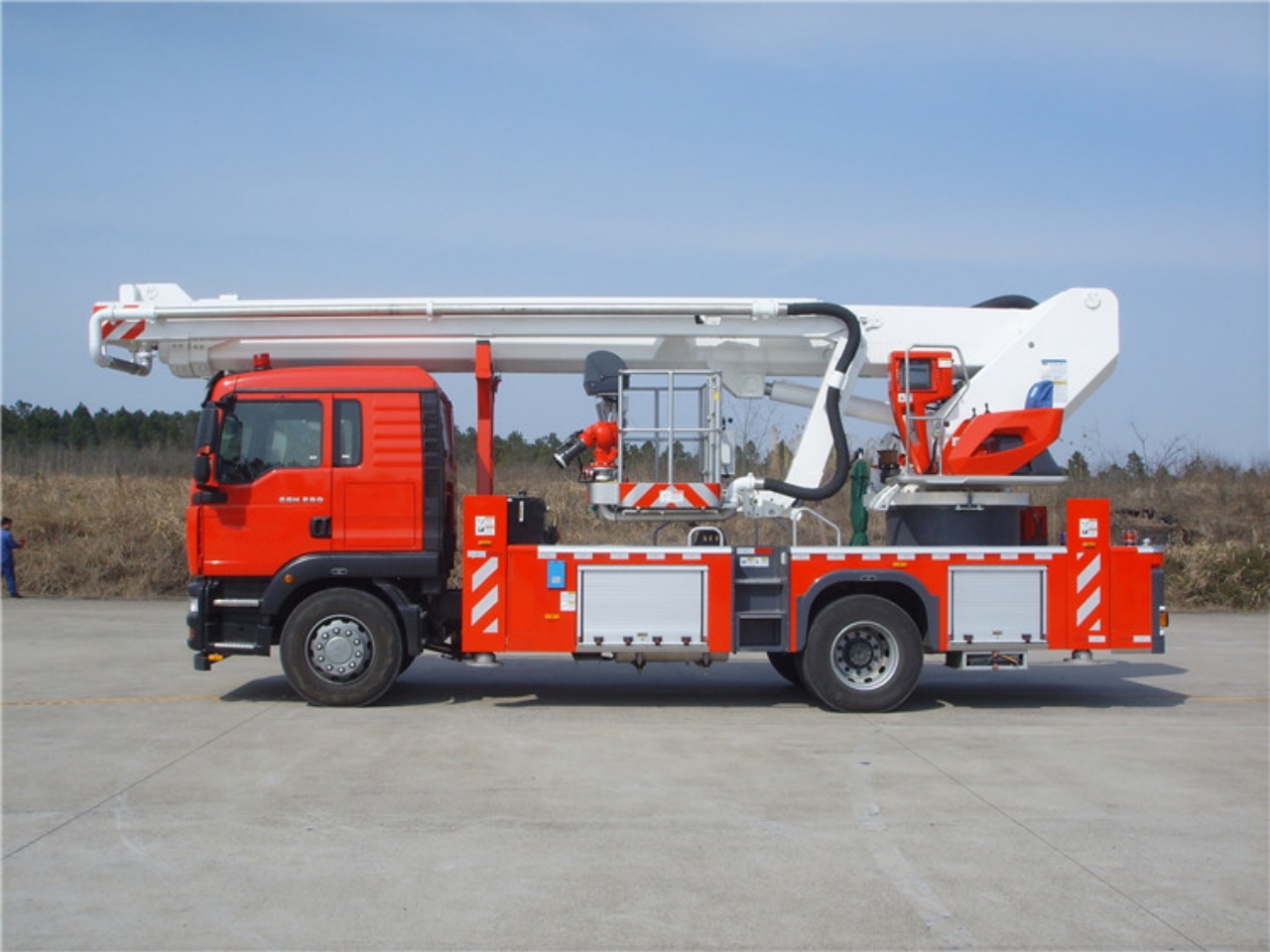
Challenges and Considerations
While aerial fire apparatus provides significant advantages, it also comes with challenges:
- Cost: These vehicles are expensive to purchase, maintain, and operate due to their specialized components.
- Training Requirements: Operating an aerial fire apparatus requires specialized training to ensure safety and efficiency in deployment.
- Space Limitations: Large aerial fire trucks may struggle to navigate narrow streets or densely populated areas.
- Setup Time: Deploying stabilizers and positioning the aerial device takes time, which may impact emergency response efficiency in fast-evolving scenarios.
Conclusion
An aerial fire apparatus is an indispensable tool for modern fire departments, offering enhanced firefighting capabilities and improving safety in high-risk emergencies. Whether through aerial ladders, articulating booms, or tower platforms, these specialized vehicles play a critical role in fire suppression, rescue, and ventilation operations. While they require significant investment and training, their ability to tackle complex firefighting challenges makes them an essential component of emergency response strategies worldwide.
